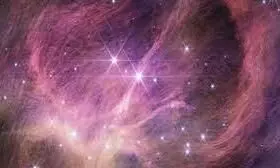
James Webb Space Telescope spots record-breaking 'failed star'
text_fieldsThe James Webb Space Telescope (JWST) has achieved a significant milestone by pinpointing a very small, free-floating brown dwarf - a celestial object that falls within the realm between stars and planets, and two additional similar entities.
These findings, located within a star cluster just 1,000 light-years from Earth, were disclosed in the Astronomical Journal on December 13, showcasing a vital advancement in outlining the distinction between stars and planets.
Lead author Kevin Luhman from Pennsylvania State University explained the study's primary objective, stating, "One basic question you'll find in every astronomy textbook is: What are the smallest stars? That's what we're trying to answer."
In an attempt to locate this unprecedented brown dwarf, Luhman and colleague Catarina Alves de Oliveira focused their examination on the star cluster IC 348 positioned approximately 1,000 light-years away in the Perseus star-forming region. The youthfulness of this cluster, around five million years old, facilitated the identification of potentially luminous brown dwarfs emitting infrared light due to their formational heat.
Initial imaging of the cluster's core with Webb's NIRCam (Near-Infrared Camera) assisted in singling out brown dwarf candidates based on their luminosity and coloration. Subsequently, the team utilised Webb's NIRSpec (Near-Infrared Spectrograph) microshutter array to investigate the most promising targets.
The unparalleled infrared sensitivity of the Webb telescope played a pivotal role, enabling the detection of fainter celestial objects that ground-based telescopes would have struggled to identify. Moreover, the telescope's remarkable clarity aided in discerning between pinpoint brown dwarfs and indistinct background galaxies based on their red hues.
Brown dwarfs, often referred to as 'failed stars,' occupy a unique position in celestial classification, straddling the boundary between stars and planets. These objects commence their formation akin to stars, undergoing gravitational collapse, yet they never attain the density and temperature required for hydrogen fusion, which defines a star.
Some of these dwarfs, particularly those on the lower end of the mass scale, bear resemblance to giant planets and possess a mass only a few times that of Jupiter.























